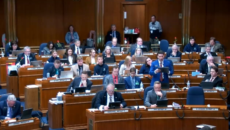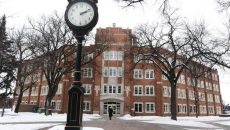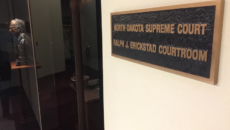North Dakota Is Way Out On A Limb On Higher Education

Michael Barone has a fantastic column today in National Review which contains a succinct timeline for America’s higher education bubble.
What should be scary for North Dakotans is that the state’s approach to higher education is emblematic of every single one of these problems. For instance, Barone mentions the practice of packing campuses by giving tuition away:
College still seemed like a good investment during the quarter century of low-inflation economic growth from 1982 to 2007. You could pay off those loans with earnings increased by your degree. Meanwhile, colleges and universities — and not just the highly selective ones — competed for students whose test scores would improve their status in the U.S. News college rankings, by giving “scholarships” that actually were discounts on the tuition list price.
North Dakota has that problem. In the 2011-12 school year, North Dakota’s universities waived over $33 million worth of tuition, a total that has been climbing steadily over the last decade…

…and the number of students receiving waivers has increased as well:

Barone mentions universities attracting more students by building lavish campuses:
To attract these students, the educational institutions built fancy dormitories, gymnasiums, and student centers.
North Dakota has that problem. The legislature just approved a budget increasing spending on campus buildings by 324%. Here’s Senator Ralph Kilzer expressing dismay about that figure on the floor of the Senate:
Barone also mentions administrative bloat, with university bureaucrats far outnumbering instructors:
And they vastly increased the number of administrators, to the point where colleges and universities had more administrators than teachers.
Again, North Dakota has that problem. Since the 2003-05 biennium, the universities have seen just a 3.54% increase in instructional staff and a 40% increase in non-instructional staff:

Finally, Barone points out that government-backed loans and subsidies for higher education have allowed tuition to go through the roof:
So Congress passed student-loan and -grant programs to make it easier for people to pay for college and university tuitions. That increased potential higher-education revenues. And surprise! Over the last three decades, tuitions rose faster than the economy grew. …
Government helped to produce an ever-increasing demand for higher education. So higher-education administrators saw no need to compete on price. Higher tuitions just gave your school more prestige.
North Dakota really has that problem. Tuition growth has been aggressive at the state’s universities over the last decade, especially for in-state students, and more than doubling at some institutions:

“Now the higher-education bubble has burst,” Barone writes. “The Wall Street Journal reported this week that that the average “tuition discount rate” offered incoming freshmen last fall by private colleges and universities has reached an all-time high of 45 percent. At the same time, their “sticker price” tuitions have increased by the smallest amount in the last dozen years. Tuitions for in-state students at public four-year colleges and universities also increased by the smallest amount during that period.”
With the national higher education bubble bursting, how will North Dakota feel the impacts? The state routinely leads the nation in per-capita higher education spending. The higher education bubble in North Dakota is, relatively speaking, perhaps more inflated than anywhere else in the country. And we just came through a legislative session where our state leaders lavished more money on the universities, giving them a roughly 32% increase in total appropriations including hundreds of millions of dollars with which to build larger campuses.
The state is way out on a limb on higher education, and while many state leaders will express concern about that privately, few dare risk the ire of university officials, alumni and their allies in the media by speaking out about it publicly. Instead we’re all treated to a soap opera in which university presidents fight a turf battle with a reform-minded chancellor.
It makes me think that maybe it will take a stunning crash in the state’s universities before North Dakotans wake up to this problem.







